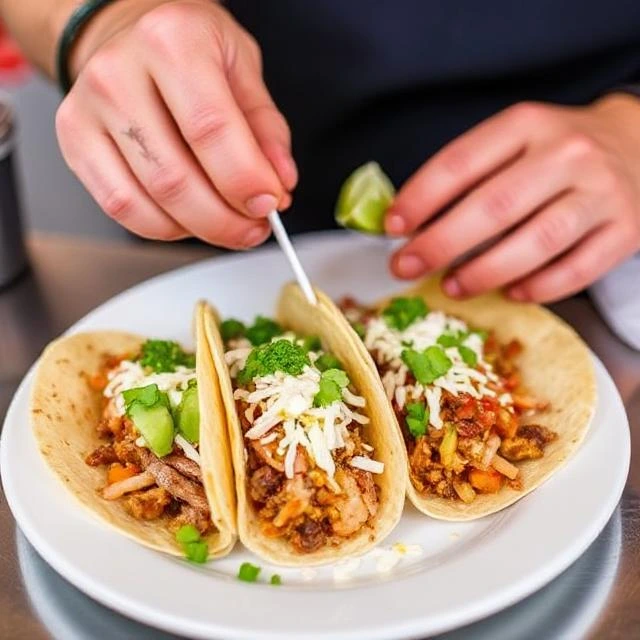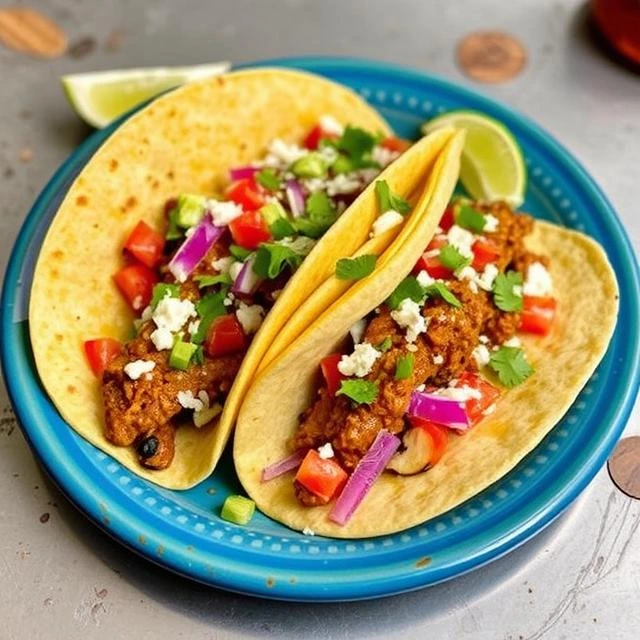Introduction: A Bite of History
Tacos al pastor—thinly sliced marinated pork, caramelized pineapple, fresh cilantro, and a squeeze of lime—is more than a Mexican street food staple. It’s a vibrant symbol of cultural fusion, blending Lebanese culinary traditions with Mexican ingenuity. Born from the migration of Lebanese immigrants to Mexico in the early 20th century, this dish has evolved into a global sensation, celebrated for its bold flavors and rich backstory. In this deep dive, we explore the origins, techniques, and enduring legacy of tacos al pastor, while offering insights into mastering this iconic dish at home.
The Lebanese-Mexican Fusion: A Culinary Journey
The story of tacos al pastor begins with the arrival of Lebanese immigrants in Mexico during the late 19th and early 20th centuries. Fleeing political instability in the Ottoman Empire, these migrants brought with them the tradition of shawarma—spit-roasted lamb or chicken served in pita bread 148. By the 1930s, their descendants began adapting this technique to local tastes, replacing lamb with pork (a meat more widely consumed in Mexico) and swapping pita for corn tortillas. This innovation gave rise to tacos árabes (“Arab tacos”), a precursor to modern tacos al pastor 48.
The final transformation occurred in Mexico City during the 1960s, when taqueros added a distinctly Mexican twist: marinating the pork in achiote paste, guajillo chilies, and pineapple juice. The dish was renamed al pastor (meaning “shepherd-style”), a nod to its Middle Eastern roots and the vertical spit cooking method reminiscent of shepherds roasting meat over open fires 1513.

Key Ingredients: The Heart of Tacos al Pastor
The magic of tacos al pastor lies in its ingredients, each contributing to its complex flavor profile:
- Pork Shoulder: Thinly sliced and marinated for tenderness.
- Achiote Paste: A vibrant red seasoning made from annatto seeds, garlic, and spices, giving the meat its signature color 510.
- Pineapple: Adds sweetness and acidity, tenderizing the meat while balancing the spice 113.
- Guajillo Chilies: Smoky and mild, these chilies form the base of the marinade 5.
- Corn Tortillas: The foundation of any authentic taco.
The marinade often includes vinegar, cumin, cloves, and oregano, creating a harmonious blend of savory, tangy, and sweet notes 1013.
Mastering the Trompo: The Art of Vertical Spit Cooking
The trompo (Spanish for “spinning top”) is central to tacos al pastor. This vertical rotisserie, adapted from the Middle Eastern shawarma spit, allows layers of marinated pork to cook slowly while basting in their own juices. A pineapple crown sits atop the trompo, dripping its sweet nectar down the meat 157.
Skilled taqueros shave off the crispy outer layers of pork as it cooks, serving it on warm tortillas with diced onions, cilantro, and a wedge of lime. The trompo isn’t just a cooking tool—it’s a spectacle, drawing crowds with its sizzling aromas and theatrical preparation 810.

Regional Variations Across Mexico
While tacos al pastor is ubiquitous, regional twists reflect Mexico’s diverse culinary landscape:
- Mexico City: The birthplace of modern al pastor, where trompos are adorned with garlic cloves and onions 710.
- Puebla: Still serves tacos árabes in pita-like pan árabe, a nod to the original Lebanese recipe 48.
- Northern Mexico: Known as tacos de trompo or adobada, often served with flour tortillas and melted cheese 510.
From Street Food to Global Phenomenon
Tacos al pastor’s popularity has transcended borders, thanks to its adaptability and universal appeal:
- United States: Cities like Los Angeles and New York boast taquerías serving spit-grilled pastor with pineapple salsa 910.
- Middle East: In Lebanon, “shawarma mexici” reintroduces the dish with a local twist, using chicken marinated in al pastor spices 5.
- Asia: Tokyo and Seoul have embraced the dish, blending it with kimchi or soy-based sauces 10.
This global reach underscores tacos al pastor’s role as a culinary ambassador, bridging cultures through food 13.
How to Make Authentic Tacos al Pastor at Home
While replicating the trompo at home is challenging, you can achieve similar flavors with a few adjustments:
Ingredients:
- 2 lbs pork shoulder, thinly sliced
- 3 tbsp achiote paste
- 1 cup pineapple juice
- 3 guajillo chilies, rehydrated
- 1 tsp cumin
- 1 tsp oregano
- Corn tortillas, pineapple chunks, cilantro, and onions
Steps:
- Blend the marinade: achiote, chilies, pineapple juice, garlic, and spices.
- Marinate pork for 4+ hours.
- Grill or roast the meat, basting with pineapple juice.
- Serve on warmed tortillas with toppings.
For a deeper dive, explore Serious Eats’ al pastor recipe or Mexico In My Kitchen’s guide.
Cultural Significance and Modern Innovations
Tacos al pastor is more than food—it’s a narrative of migration and adaptation. It reflects Mexico’s ability to absorb foreign influences while creating something uniquely its own 37. Today, chefs are reimagining the dish with plant-based alternatives, sous-vide cooking, and gourmet toppings like truffle salsa 910.

FAQs: Unraveling the Mysteries of Tacos al Pastor
- Why is it called “al pastor”?
The name references the shepherd-style spit-roasting technique 58. - Is pineapple traditional?
Yes, though its origin remains debated—some credit it for tenderizing meat, others for flavor balance 14. - Can I use chicken instead of pork?
Absolutely! Try Bon Appétit’s chicken al pastor recipe for a lighter twist.
Conclusion: A Dish That Unites Worlds
Tacos al pastor is a testament to the power of culinary fusion. From the streets of Beirut to the taquerías of Mexico City, it embodies resilience, creativity, and shared humanity. Whether enjoyed at a bustling mercado or homemade with loved ones, each bite is a celebration of history—a delicious reminder that food knows no borders.
Hungry for More?
- Explore the history of Mexican-Lebanese cuisine.
- Discover other fusion dishes like Korean-Mexican tacos.